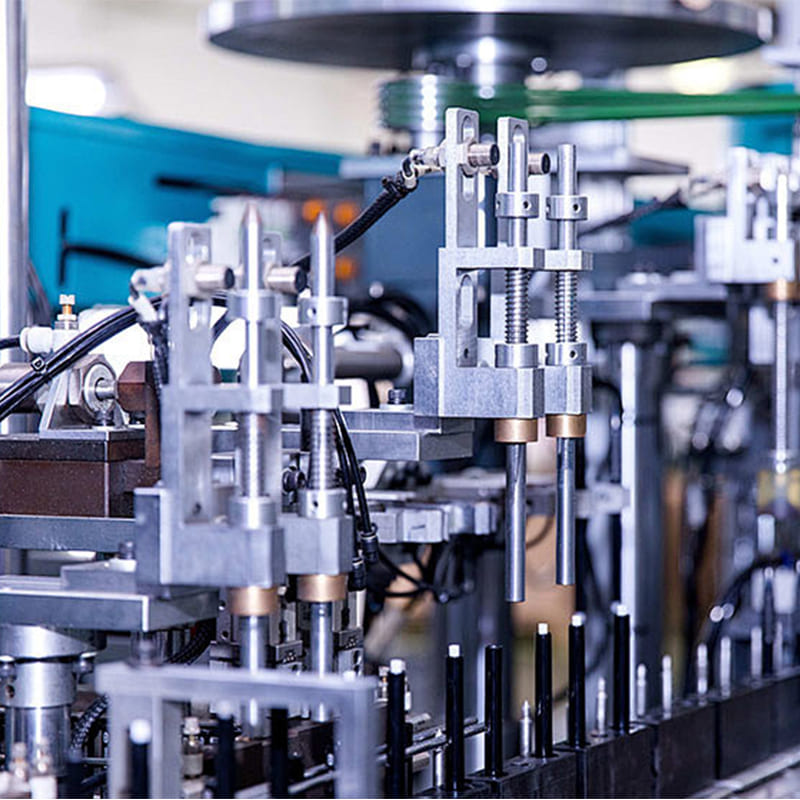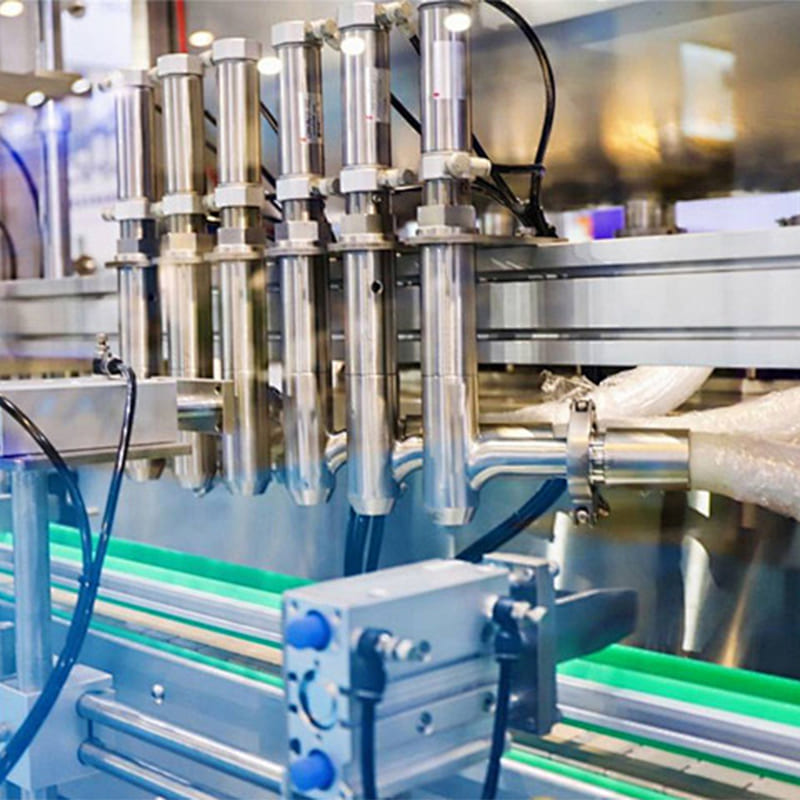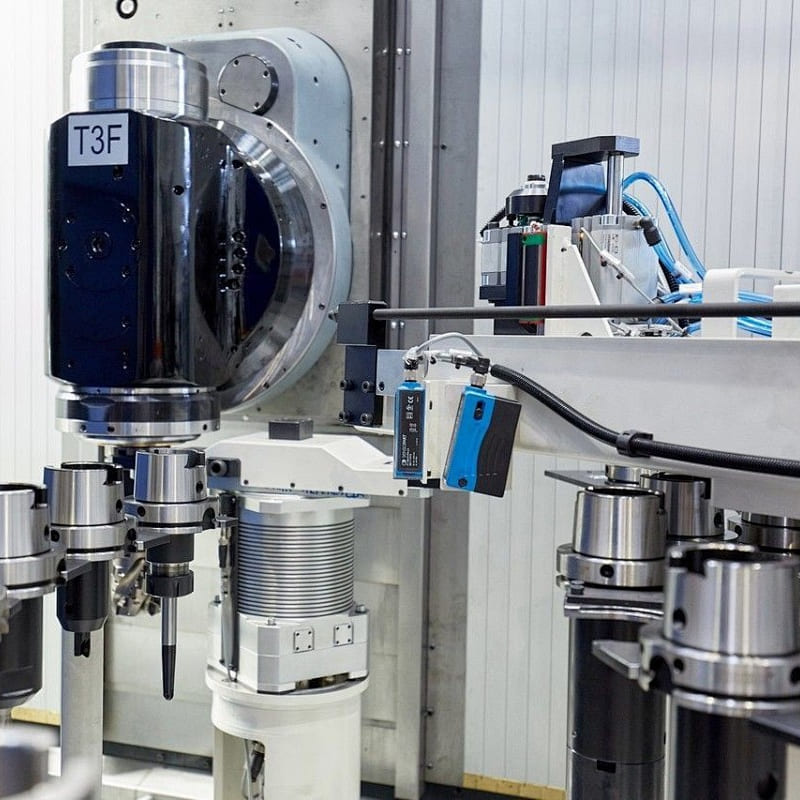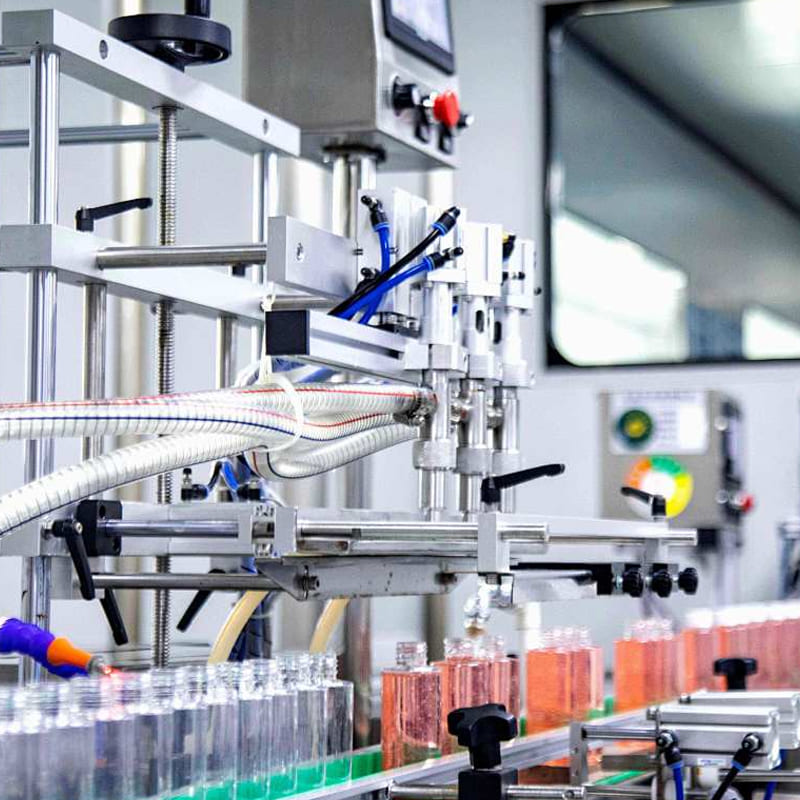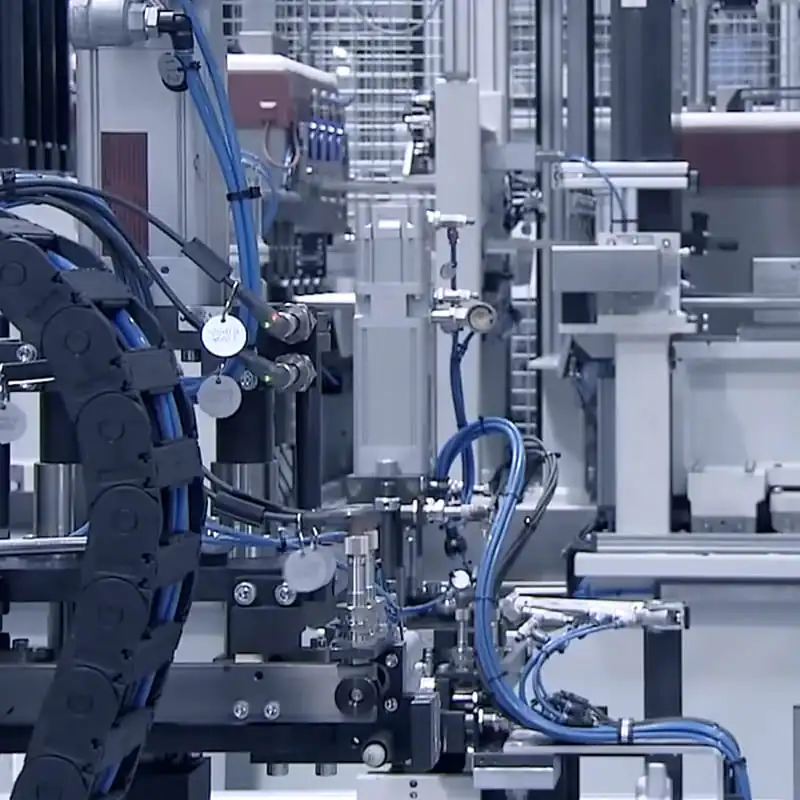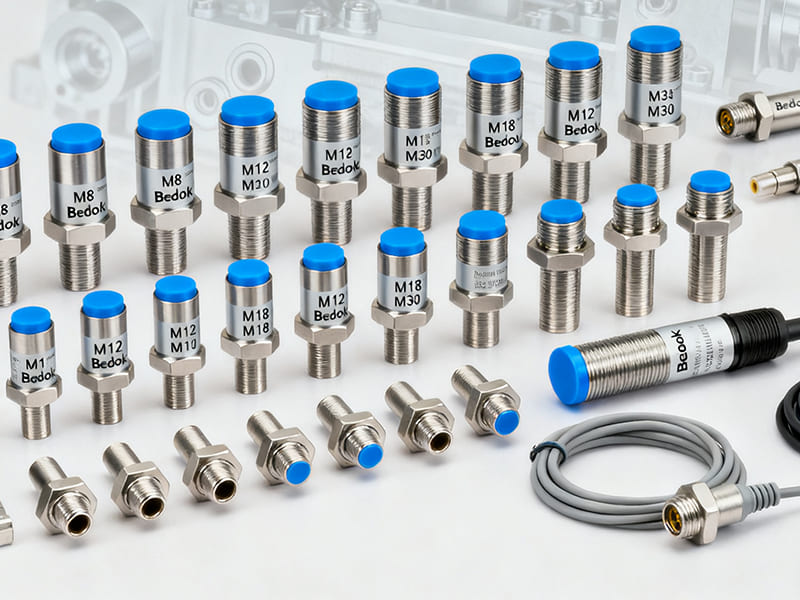Inductive Proximity Sensors in the Packaging Industry: Applications and Benefits
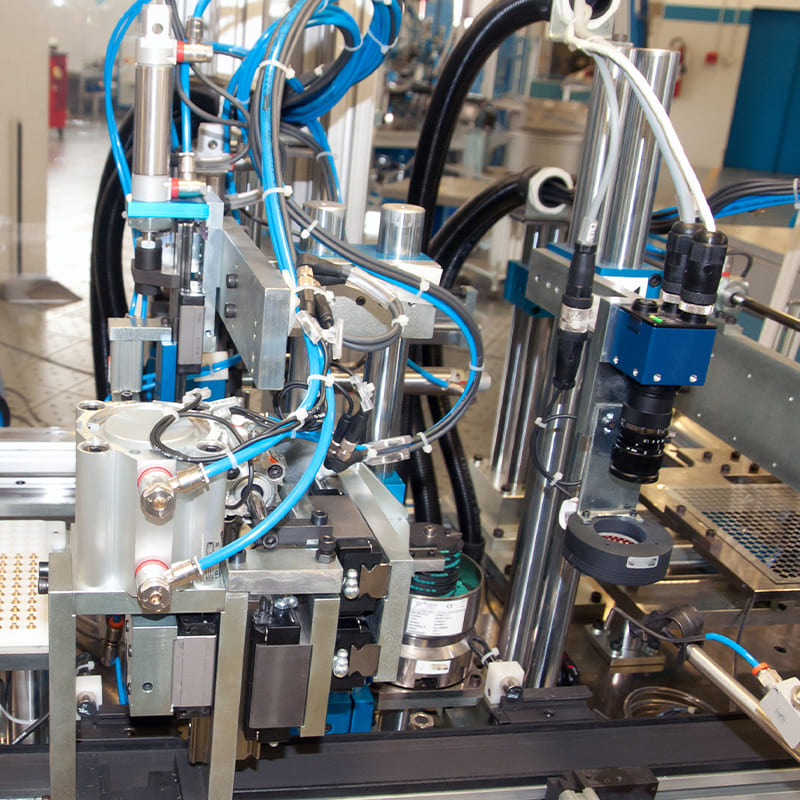
Inductive Proximity Sensors in the Packaging Industry have become indispensable components in modern packaging processes, offering a wide range of benefits in terms of automation, efficiency, and accuracy.
As industries strive to meet increasing demands for faster, more reliable packaging systems, inductive sensors play a pivotal role in ensuring smooth and error-free operations. With the rise of automation technologies, packaging lines are integrating these sensors to enhance production quality, reduce downtime, and optimize overall performance. This article explores the current applications of inductive proximity sensors in the packaging industry, focusing on their key features, advantages, and practical uses across different packaging processes.
Current Applications of Inductive Proximity Sensors in the Packaging Industry
The packaging industry is evolving towards greater automation, smart systems, and higher production efficiency. Automated packaging lines can streamline production, reduce human error, and ensure consistent packaging quality. In such settings, inductive sensors serve as critical components for detection and control.
Inductive Sensor Applications in Packaging
Inductive proximity sensors are widely used in the packaging industry for the following functions:
- Packaging Material Detection: These sensors detect the presence, position, and thickness of packaging materials, ensuring they are supplied correctly.
- Machine Positioning: In packaging machinery, inductive sensors help with precise positioning of mechanical components, ensuring the accuracy and stability of the packaging process.
- Product Detection: They detect the presence, position, and dimensions of products, ensuring they are properly packaged.
- Counting Functionality: Sensors count items as they move along the production line, increasing operational efficiency.
Market Demand Analysis
As the packaging industry continues to grow, the demand for inductive proximity sensors is on the rise. The primary requirements from the market include:
- High Precision: Accurate detection of packaging materials and products is essential to maintain packaging quality.
- High Reliability: Sensors must perform reliably in harsh environments to ensure smooth production.
- Fast Response Times: Quick response times are crucial to keep up with the high speed of automated packaging lines.
- Compact Size: Small and lightweight sensors are ideal for installation in space-constrained machinery.
Key Features and Advantages of Inductive Proximity Sensors in Packaging
Features of Inductive Sensors
- Non-contact Detection: Inductive sensors use electromagnetic fields to detect objects without physical contact, preventing damage to the items being detected.
- High Sensitivity: They can detect even the smallest changes, making them ideal for packaging material and product detection.
- Strong Interference Resistance: Inductive sensors are not affected by light, dust, oil, or other contaminants, making them highly reliable in challenging environments.
- Fast Response Time: Inductive sensors respond quickly to changes, which helps improve production speed.
- High Reliability: These sensors are designed with advanced electronics and manufacturing techniques, ensuring long-lasting and stable performance.
Advantages of Inductive Sensors
- Enhanced Production Efficiency: By quickly and accurately detecting the required parameters of packaging materials and products, inductive sensors reduce manual labor and errors, improving overall efficiency.
- Assured Packaging Quality: Real-time monitoring of materials and products ensures packaging quality, enabling adjustments before issues arise.
- Cost Reduction: Automated detection reduces labor costs while increasing production speed, leading to lower overall manufacturing costs.
- Adaptability to Harsh Environments: With their strong resistance to interference and high reliability, inductive proximity sensors thrive in the challenging environments typical of the packaging industry.
- Ease of Installation and Maintenance: Their compact size and low weight make them easy to install, and their low maintenance requirements reduce operating costs.
Specific Applications of Inductive Proximity Sensors in Packaging Processes
Packaging Material Supply
Application: Inductive sensors are used to detect the presence and position of packaging materials in the supply process. If materials run out or malfunction, the sensor triggers an alert for replenishment or maintenance.
Technical Parameters:
- Detection Range: Typically 2-10mm, adjustable based on the material thickness and type.
- Response Frequency: 100Hz to 1kHz, suitable for fast-paced supply lines.
- Output Signals: Common outputs include NPN or PNP configurations for compatibility with control systems like PLCs.
Case Study: A packaging company reported a 20% increase in efficiency after installing inductive proximity sensors for packaging material detection, significantly reducing downtime caused by supply issues.
Machine Positioning
Application: In packaging machinery, sensors detect the positions of mechanical parts (e.g., in sealing or labeling machines), ensuring the accuracy and consistency of packaging operations.
Technical Parameters:
- Precision: Typically within ±0.1mm.
- Repeatability: Generally within ±0.05mm.
- Protection Class: Usually rated at IP65 or higher to withstand industrial environments.
Case Study: A packaging machinery manufacturer improved the sealing accuracy of their machines by 50% by integrating PNP inductive sensors for precise part positioning.
Product Detection
Application: Inductive sensors detect the position and size of products during packaging to ensure accurate filling and packaging.
Technical Parameters:
- Detection Range: Varies depending on product size, typically from a few millimeters to tens of millimeters.
- Response Time: Usually in the range of milliseconds.
- Output Signals: Choose between analog or digital outputs based on the system’s needs.
Case Study: A food packaging company reduced product misalignment by 30% by using 3-wire inductive sensors to monitor product dimensions and positions on the production line.
Counting Functionality
Application: Inductive sensors are used to count items in the packaging process, signaling when a pre-set quantity has been reached.
Technical Parameters:
- Counting Accuracy: Typically within ±1%.
- Max Counting Frequency: Can be configured to handle hundreds to thousands of items per second.
- Output Signals: Pulses or digital displays based on the control system’s needs.
Case Study: A pharmaceutical company improved its production efficiency and reduced counting errors by 90% using 2-wire inductive sensors (NO/NC) for item counting.
Packaging Quality Detection
Application: After packaging, inductive sensors check for issues like improper seals or misaligned labels, preventing defective products from reaching customers.
Technical Parameters:
- Precision: Varies based on packaging quality requirements, typically a few millimeters.
- Response Time: A few milliseconds to ensure quick detection and correction.
- Output Signals: Digital or analog based on system integration.
Case Study: An electronics manufacturer reduced returns by 40% after using inductive sensors to detect faulty seals in product packaging.
Equipment Safety Protection
Application: Inductive sensors in dangerous zones of packaging machines stop operations if human presence or other objects are detected, ensuring worker safety.
Technical Parameters:
- Detection Distance: Varies, typically tens of millimeters to several meters.
- Response Time: Typically milliseconds to trigger an immediate stop.
- Output Signals: Often relay outputs or signals for safety controllers.
Case Study: A packaging company saw an 80% reduction in safety incidents after integrating 4-wire inductive sensors (NO+NC) in high-risk areas of their machines.
Choosing the Right Inductive Proximity Sensor Supplier for the Packaging Industry
Supplier Credentials and Reputation
Choosing a reliable supplier with certifications like ISO 9001 or CE ensures that the sensors meet quality standards. It’s important to evaluate their market reputation, customer feedback, and technical expertise to ensure they can meet your needs.
Product Quality and Performance
Ensure that the supplier has a robust quality control system. The sensor’s technical parameters—such as detection accuracy, response speed, and environmental resistance—should match your operational requirements. Opt for suppliers offering cost-effective, high-performance products.
Technical Support and After-Sales Service
Select a supplier that offers comprehensive technical support, from sensor selection to installation and troubleshooting. A strong after-sales service system with fast response times ensures minimal downtime.
Price and Delivery Time
Compare prices from different suppliers and choose one that provides competitive pricing without compromising on quality. Ensure timely delivery to avoid production delays.
Customization Services
For specific packaging processes, choose a supplier capable of offering custom solutions to meet unique application requirements.
For reliable, high-performance inductive proximity sensors, look no further than Bedook. We offer customized solutions tailored to your packaging needs, ensuring quality, efficiency, and safety. Contact us today to learn more!
Explore Bedook: Your Trusted Sensor Manufacturer
At Bedook, we specialize in designing, developing, and manufacturing a comprehensive range of proximity sensors and switches. Our extensive product lineup includes:
- Inductive Proximity Sensors
- Capacitive Proximity Sensors
- Photoelectric Sensors
- Ultrasonic Sensors
- Solid State Relays
- Various Accessories
With over 10,000 detailed product variations and a robust R&D team, we take pride in our ability to meet your unique requirements with tailored solutions and reliable performance.
Whether you’re seeking off-the-shelf products or customized designs, Bedook offers the expertise and production capacity to ensure your satisfaction.
Get in Touch Today!
We value your interest in our products and warmly encourage you to send us an inquiry. Let us help you find the perfect sensor solution for your application.
Thank you for considering Bedook—your trusted partner in innovation and quality manufacturing. We look forward to collaborating with you!

